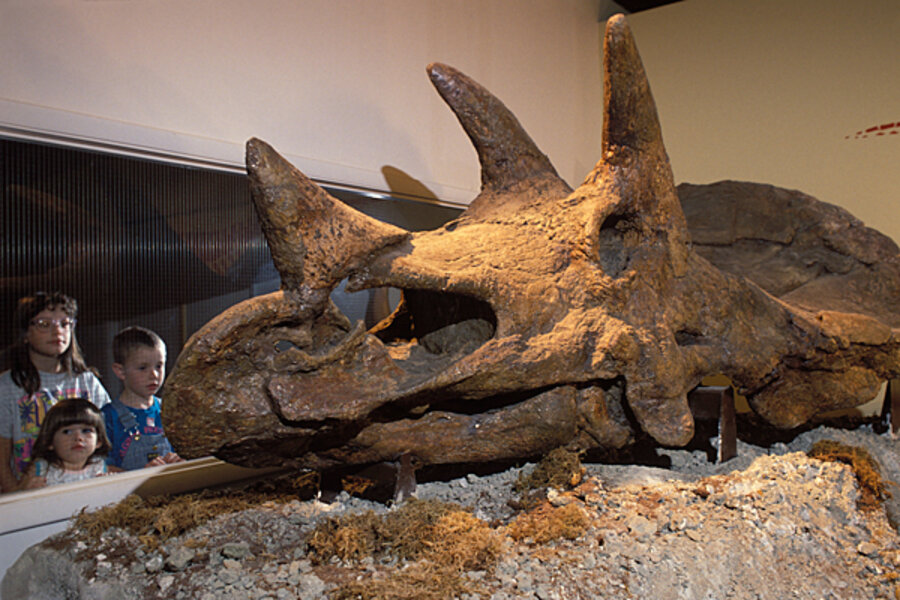Did horned dinosaurs island-hop to Europe?
Loading...
Horned dinosaurs may have hopped across islands to make their way into Europe, researchers now reveal.
Horned dinosaurs known as ceratopsians, which include the famed Triceratops, thrived during the late Cretaceous roughly 100 million to 65 million years ago. Until now, scientists thought these highly diverse herbivores were limited to Asia and North America.
Now scientists reveal a new small horned dinosaur, possibly a dwarf dino, from Europe. When it lived some 85 million years ago, much of what is now Europe was part of a complex series of island chains known as the Tethyan archipelago, situated between the African and Eurasian land masses in the now-vanished Tethys Ocean.
IN PICTURES: Fearsome dinosaurs
"It would have lived in a subtropical climate that was probably rich with many different kinds of vegetation," said researcher Attila Osi, a vertebrate paleontologist at the Hungarian Natural History Museum in Budapest. "The animal most frequently found in this area so far is the armored Hungarosaurus, a kind of ankylosaur, an herbivore about 4 meters [13 feet] long. There were also pterosaurs we have found there, and small-bodied omnivorous crocodilians."
The three skull bones that make up the fossilized remains of this horned dinosaur, Ajkaceratops kozmai, were unearthed last summer in an aluminum-rich bauxite quarry in Hungary that Osi discovered a decade ago. The dinosaur is named after the nearby town Ajka, pronounced oi-ka, as well as a geologist who lives in Ajka named Károly Kozma.
"When I was a boy in school, he helped me become a scientist — he gave me a lot of books, a lot of ideas, and helped me arrange my life to go to university to study paleontology," Osi recalled. "He was one of the earliest mentors for me."
At its largest, this new species grew to just 3 feet or so long (1 meter). It might be possible this was a dwarf species that shrank down to live comfortably within the small confines of an island, the researchers speculate. Dwarf dinosaurs were known to live in what is now Transylvania.
Fossil teeth that might have been ceratopsian had been reported from Sweden in 2007. However, the researchers noted this new find represents the first unambiguous discovery of a horned dinosaur in Europe.
"Now it is really exciting to see their presence in another continent," said paleontologist Xing Xu at the Chinese Academy of Sciences in Beijing, who did not take part in this study. Xu added these findings suggest that European species may have had other connections with Asia or North America or both during the late Cretaceous.
Judging by skeletal features, the closest relatives of these horned dinosaurs come from the Gobi Desert. Their ancestors might have swum westward from island to island, or they might have walked to these areas when the islands were landlocked, only to get separated later when sea levels rose, Osi said.
"Hopefully we can now find ceratopsians from other, earlier sites in Europe, to get a better picture of when and how they arrived," Osi said.
The scientists detailed their findings online May 26 in the journal Nature.





